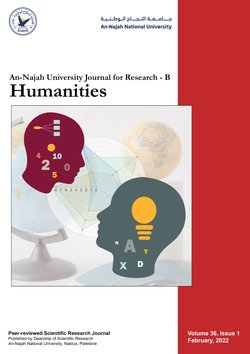Assessment of soil erosion risk in the Azraq basin using soil and water assessment model, GIS, and remote sensing
Authors:
Article info
2021-04-10
2021-07-28
739 - 774
Keywords
- Remote Sensing
- Geographic Information Systems
- Al-Azraq Basin
- Soil and Water Model Assessment
- Soil Erosion
- Sediment Yield
Abstract
The study aims at evaluating soil erosion in Azraq Basin using soil and water assessment model, GIS and remote sensing. The soil erosion has important negative effects on the ground resources In the basin. As other basins in Jordan, Azraq Basin suffers extremely from soil erosion that resulted from the decrease of soil productivity before being eroded. Soil erosion is related to many environmental problems such as sedimentation in the river channels and dams, and deterioration water quality, so strategies for managing water basins and protecting soil from Erosion are needed. The results of the study showed that Azraq Basin has annually an average of 99.8 Mm of rainfall; the majority lost by evaporation process, and 73.8% of the total precipitation is wasted because of the actual evaporation process, whereas surface runoff has 8.9% of the total precipitation of the Basin. The study reveals that about 24.5% of Azraq Basin area suffers from severe soil erosion mainly In Wadi Al-Ghadf and Modaisisat. The Study also reveals that Wadi Modaissat is the largest basin in Azraq Basins, it Produces 58.4% of the total eroded materials.
Ghumaid, A. A., & Sammor, H. A. (2023). Assessment of soil erosion risk in the Azraq basin using soil and water assessment model, GIS, and remote sensing. An-Najah University Journal for Research - B (Humanities), 37(4), 739–774. https://doi.org/10.35552/0247-037-004-006
[1]A. A. Ghumaid and H. A. Sammor, “Assessment of soil erosion risk in the Azraq basin using soil and water assessment model, GIS, and remote sensing,” An-Najah University Journal for Research - B (Humanities), vol. 37, no. 4, pp. 739–774, Apr. 2023, doi: 10.35552/0247-037-004-006.
Ghumaid, Atef Ayed, and Hassan Abo Sammor. “Assessment of Soil Erosion Risk in the Azraq Basin Using Soil and Water Assessment Model, GIS, and Remote Sensing.” An-Najah University Journal for Research - B (Humanities), vol. 37, no. 4, Apr. 2023, pp. 739–74. Crossref, https://doi.org/10.35552/0247-037-004-006.
1.Ghumaid AA, Sammor HA. Assessment of soil erosion risk in the Azraq basin using soil and water assessment model, GIS, and remote sensing. An-Najah University Journal for Research - B (Humanities) [Internet]. 2023 Apr;37(4):739–74. Available from: http://dx.doi.org/10.35552/0247-037-004-006
Ghumaid, Atef Ayed, and Hassan Abo Sammor. “Assessment of Soil Erosion Risk in the Azraq Basin Using Soil and Water Assessment Model, GIS, and Remote Sensing.” An-Najah University Journal for Research - B (Humanities) 37, no. 4 (April 2023): 739–74. https://doi.org/10.35552/0247-037-004-006.
تقييم مخاطر انجراف التربة في حوض الأزرق باستخدام نموذج تقييم التربة والمياه ونظم المعلومات الجغرافية والاستشعار عن بعد
المؤلفون:
معلومات المقال
2021-04-10
2021-07-28
739 - 774
الكلمات الإفتتاحية
- Remote Sensing
- Geographic Information Systems
- Al-Azraq Basin
- Soil and Water Model Assessment
- Soil Erosion
- Sediment Yield
الملخص
تهدف هذه الدراسة إلى تقييم مخاطر انجراف التربة لحوض الأزرق باستخدام نموذج تقييم التربة والمياه والتقنيات ونظم المعلومات الجغرافية والاستشعار عن بعد؛ وذلك لما له من آثار سلبية على الموارد الأرضيَّة في الحوض، حيث يعاني حوض الأزرق كغيره من الأحواض المائية في الأردن من مشكلة انجراف التربة، والناتجة عن انخفاض إنتاجية التربة في المنطقة قبل تعرضها للانجراف. كما يرتبط انجراف التربة بالعديد من المشكلات البيئية الأخرى، مثل: تموضع الرواسب في مجاري الأودية ، والسدود المائية وتدهور نوعيه المياه، مما يتطلب وضع استراتيجيات لإدارة الأحواض المائية وحماية تربتها من الانجراف. وتوصَّلت الدراسة إلى أن حوض الأزرق يتلقى معدل مطري يبلغ 99.8 ملم / سنويًا، يفقد الجزء الأعظم منها بواسطة عملية التبخر، حيث إن 73.8% من مجمل الهطول المطري يذهب نتيجة عملية التبخر الفعلي، في حين إن الجريان السطحي يستأثر بـ 8.9% من إجمالي الهطول المطري على حوض الأزرق، كما أوضحت الدراسة أن 24.5% من مساحة حوض الأزرق تصنَّف بأنها ذات معدل انجراف شديد جدًا للتربة، وتتمثل هذه المساحة في: حوضي واديي الغدف والمديدسسات. وأظهرت الدراسة أن حوض وادي المديدسسات هو أكثر الأحواض الفرعية لحوض الأزرق في معدل العائد الرسوبي المتوقع والذي يشكل ما نسبته 58.4% من أصل المواد المنجرفة فيه.
Ghumaid, A. A., & Sammor, H. A. (2023). Assessment of soil erosion risk in the Azraq basin using soil and water assessment model, GIS, and remote sensing. An-Najah University Journal for Research - B (Humanities), 37(4), 739–774. https://doi.org/10.35552/0247-037-004-006
[1]A. A. Ghumaid and H. A. Sammor, “Assessment of soil erosion risk in the Azraq basin using soil and water assessment model, GIS, and remote sensing,” An-Najah University Journal for Research - B (Humanities), vol. 37, no. 4, pp. 739–774, Apr. 2023, doi: 10.35552/0247-037-004-006.
Ghumaid, Atef Ayed, and Hassan Abo Sammor. “Assessment of Soil Erosion Risk in the Azraq Basin Using Soil and Water Assessment Model, GIS, and Remote Sensing.” An-Najah University Journal for Research - B (Humanities), vol. 37, no. 4, Apr. 2023, pp. 739–74. Crossref, https://doi.org/10.35552/0247-037-004-006.
1.Ghumaid AA, Sammor HA. Assessment of soil erosion risk in the Azraq basin using soil and water assessment model, GIS, and remote sensing. An-Najah University Journal for Research - B (Humanities) [Internet]. 2023 Apr;37(4):739–74. Available from: http://dx.doi.org/10.35552/0247-037-004-006
Ghumaid, Atef Ayed, and Hassan Abo Sammor. “Assessment of Soil Erosion Risk in the Azraq Basin Using Soil and Water Assessment Model, GIS, and Remote Sensing.” An-Najah University Journal for Research - B (Humanities) 37, no. 4 (April 2023): 739–74. https://doi.org/10.35552/0247-037-004-006.
An-Najah National University
Nablus, Palestine
Nablus, Palestine
- P.O. Box
- 7, 707
- Fax
- (970)(9)2345982
- Tel.
- (970)(9)2345560
- (970)(9)2345113/5/6/7-Ext. 2628
- [email protected]
- EIC
- Prof. Ismail Warad
